Recent Articles
Popular Makes
Body Types
2020 Hyundai Santa Fe Road Test and Review
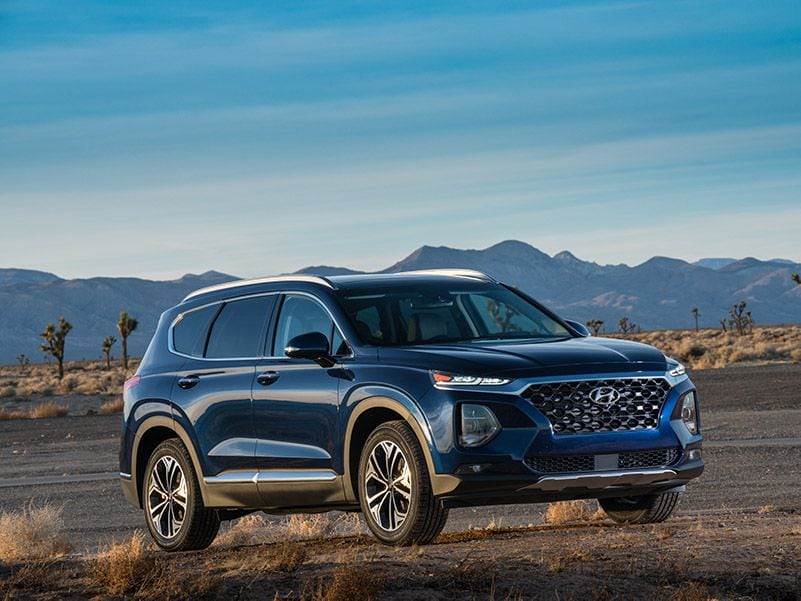
2019 Hyundai Santa Fe ・ Photo by Hyundai
One thing every family seeks is value. That’s why big-box stores, discount clothing outlets, fast-food restaurants, and basic motel accommodations are so popular with moms, dads, and kids. And that’s why any American family of four needs to strongly consider getting a 2020 Hyundai Santa Fe.
This mid-size crossover SUV drips with value. From its roomy interior to its affordable prices, and from its generous warranty and free subscription service plans to its exceptional crash-test ratings, the 2020 Santa Fe is the perfect family SUV. Unless you need a third-row seat, of course. And in that case, Hyundai is ready for you with the larger Palisade model.
Priced Right, Made in the U.S.A.
Reportedly, the average transaction price of a new vehicle in America is more than $37,500. For that money, plus a $1,095 destination charge to ship a Santa Fe from its Montgomery, Alabama, factory to your dealership, you can get a loaded Limited 2.0T with a turbocharged four-cylinder engine and front-wheel drive. You can add all-wheel drive for $1,700 extra.
That’s the version I tested, but if you don’t need the added power and all of the extras, you can get into the Santa Fe SE for $26,995 (including destination). Other choices include the SEL ($28,745), SEL 2.0T ($35,595), and Limited ($36,745). The main reason to get a turbocharged Santa Fe is for the extra 50 horsepower and 82 pound-feet of torque. Translated, this means quicker acceleration, especially when passengers and cargo are packed into the cabin or you’re driving at altitude where turbocharged engines are less affected by the thinner atmosphere.
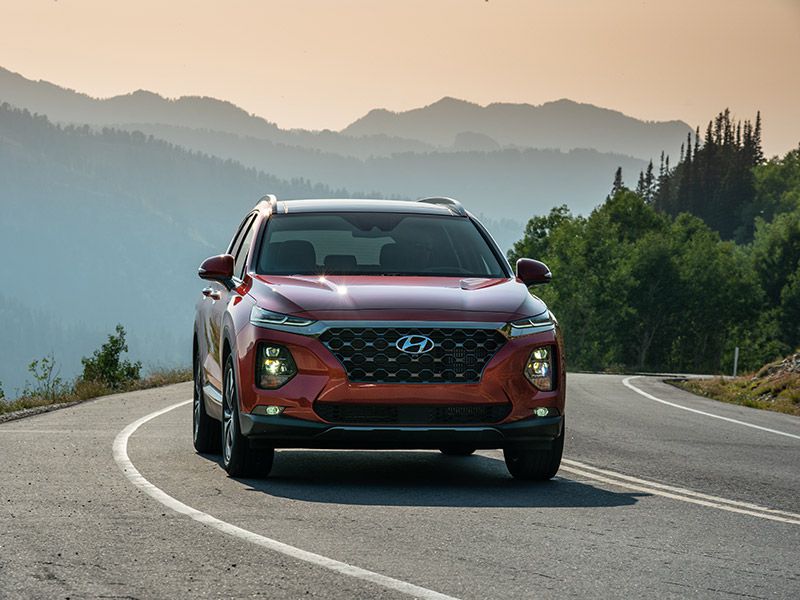
Photo by Hyundai
Comfortable Seats, Cramped Cargo Space
During a trip from Los Angeles to Las Vegas, the Santa Fe Limited 2.0T proved mighty comfortable. While I didn’t need the heated steering wheel or the heated front and rear seat cushions, the ventilated front seats sure came in handy. Also, in spite of its enormous panoramic glass sunroof, the black leather interior stayed cool thanks to the Santa Fe’s effective dual-zone automatic climate control system with Clean Air ionization.
Hyundai does a terrific job with the Santa Fe’s control layout. Clearly a believer in knobs, buttons, and legible markings, the company makes it easy to find and use the Santa Fe’s features. At night, everything glows in white and soothing lavender blue. Behind the roomy rear seat, cargo space measures 35.9 cubic feet, which is on the small side for a mid-size SUV. Release levers in the trunk fold the back seat down, creating 71.3 cubic feet of volume. Again, that’s on the small side of the segment.
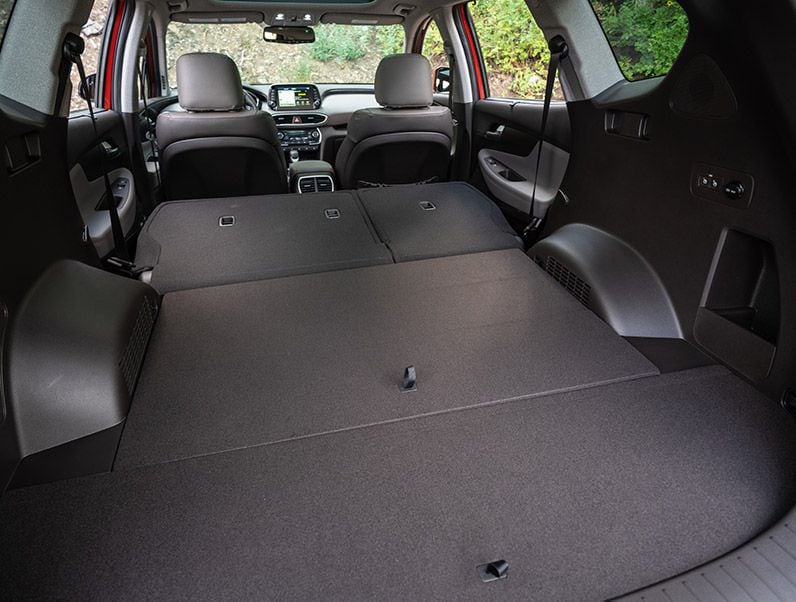
Photo by Hyundai
Impressive and Intuitive Infotainment
An intuitive infotainment system that responds quickly to input is just one of the reasons the Santa Fe is so easy to live with. The display sits at the top of the dashboard and offers control knobs and shortcut buttons to the main menus.
Apple CarPlay and Android Auto smartphone integration are standard, and with SEL and Limited trims, access to Blue Link subscription services is free for the first three years of ownership. Upgrades include a larger 8-inch screen, wireless device charging, a 12-speaker Infinity premium sound system, and a navigation system. The test car had all of these features, plus a comprehensive head-up display that remained visible when the driver wore polarized sunglasses. The available surround-view monitoring system also proved helpful, providing a top-down view of the SUV and its surroundings.
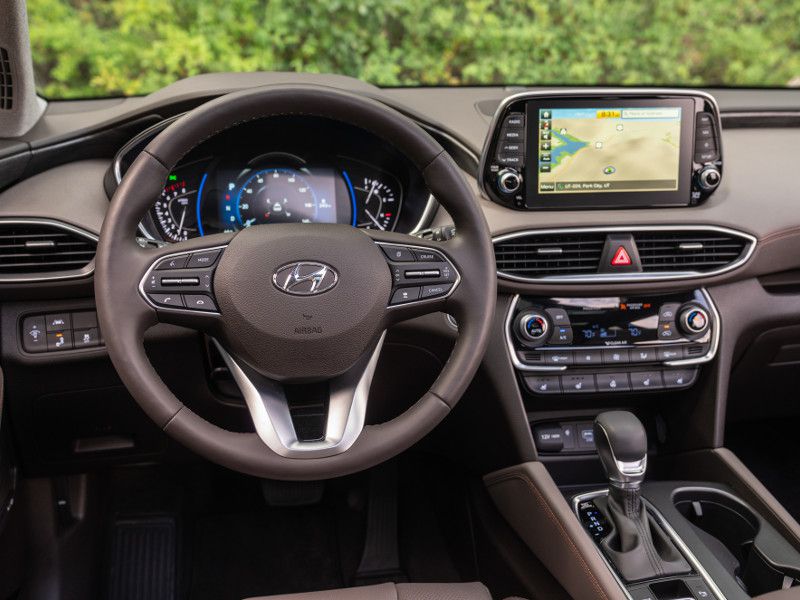
Photo by Hyundai
An Exceptionally Safe SUV
Family vehicles need to be safe, so you should know the Hyundai Santa Fe received a Top Safety Pick+ rating in 2019. That applies only to versions with LED headlights, however. Even without them, though, collision testing shows top-notch protection for you and your loved ones.
Speaking of the people you love the most, the Santa Fe is equipped with technology that reminds you a child or pet might still be in the back seat, so check before leaving the SUV. Safe Exit Assist is another available safety system, and Blue Link includes safe teen driving settings that provide parents with speed, curfew, and boundary alerts. These features are in addition to a long list of driving assistance and collision-avoidance systems, including a new-for-2020 Blind View Monitoring system that supplies a camera view of what’s on either side of the Santa Fe.
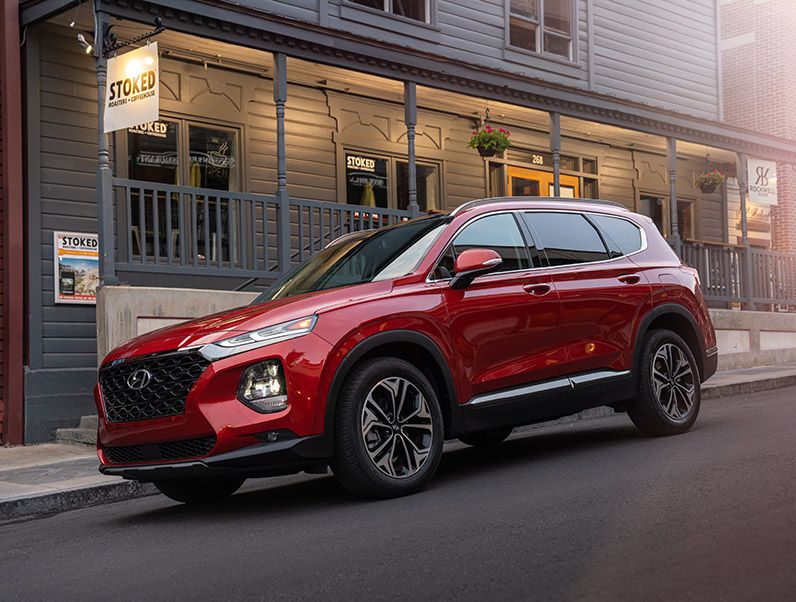
Photo by Hyundai
Turbocharged Engine Worth the Upgrade
A 2.4-liter four-cylinder engine making 185 horsepower is standard in the Santa Fe, paired with an eight-speed automatic transmission and front-wheel drive. An AWD system is optional.
Our test vehicle had the optional turbocharged 2.0-liter four-cylinder engine. Its additional horsepower and broader torque curve are more suited to a vehicle this size and give the Santa Fe good acceleration and passing power. It is offered only with SEL and Limited trims and uses the same eight-speed automatic transmission. AWD is optional. Fuel economy ratings take a hit with the turbo, ranging from 22 mpg to 23 mpg in combined driving compared to the 24 to 25 mpg for the standard 2.4-liter. However, what you give up in savings at the pump is more than worth the extra power.

Photo by Hyundai
Good Power, Delayed Downshifts
During my testing, the Santa Fe averaged 19.4 mpg on my testing loop, falling short of the EPA estimate of 22 mpg. Over the course of 835 miles of driving in a week, the Santa Fe averaged 23.4 mpg — including the round-trip to Vegas.
Though the Santa Fe 2.0T’s peak torque tapers off 2,500 rpm before peak horsepower arrives, the SUV accelerates in a smooth and linear fashion. If there is a hiccup in power delivery, it’s related to the transmission. Keep it in Comfort or Smart mode, and it resists downshifting in order to preserve fuel efficiency. Sport mode eliminates this hesitation, but at the cost of fuel economy. Hyundai’s HTRAC AWD automatically distributes power to the wheels with the best traction. In more challenging conditions, the driver can lock power distribution evenly between the front and rear wheels. I’ve used this system in a current-generation Santa Fe to plow through the mud and muck of central Utah, and it works well.
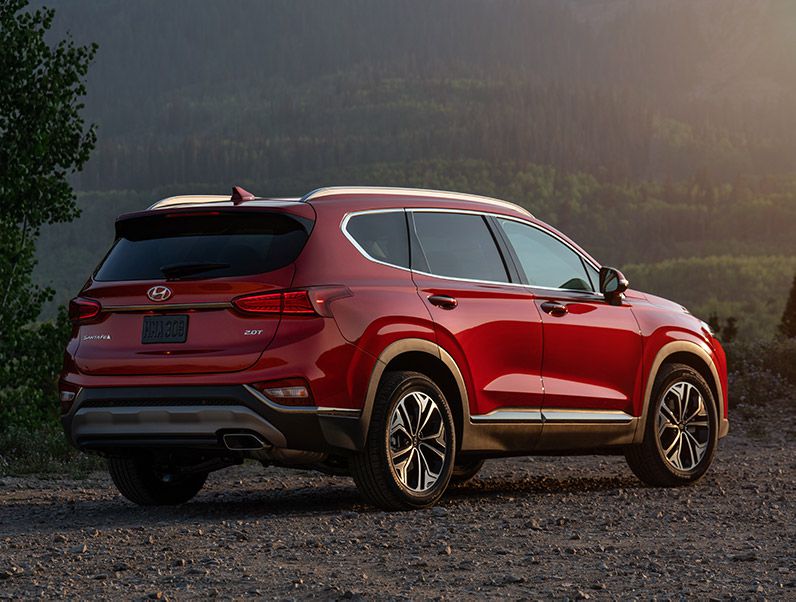
Photo by Hyundai
Enjoyable to Drive No Matter the Occasion
The Santa Fe 2.0T is enjoyable to drive. Aside from providing exactly the amount of power an SUV like this one needs, it is comfortable and quiet for hours of highway driving, cruising effortlessly at extra-legal speeds.
Around town, thanks in part to its tidy dimensions and excellent outward visibility, the Santa Fe is easy to maneuver and park. The ride is firm but not harsh, and the Santa Fe can hustle around corners with confidence. The brakes are easy to modulate for smooth stops, and the steering never feels too light or heavy, making it just right. Take this SUV on a twisty road, and it proves capable if not outright fun. The suspension tuning does allow more bounce and roll than might be desirable, but the Santa Fe remains securely planted to the pavement, its larger 19-inch wheels and 235/55 tires offering decent grip without much in the way of wailing.
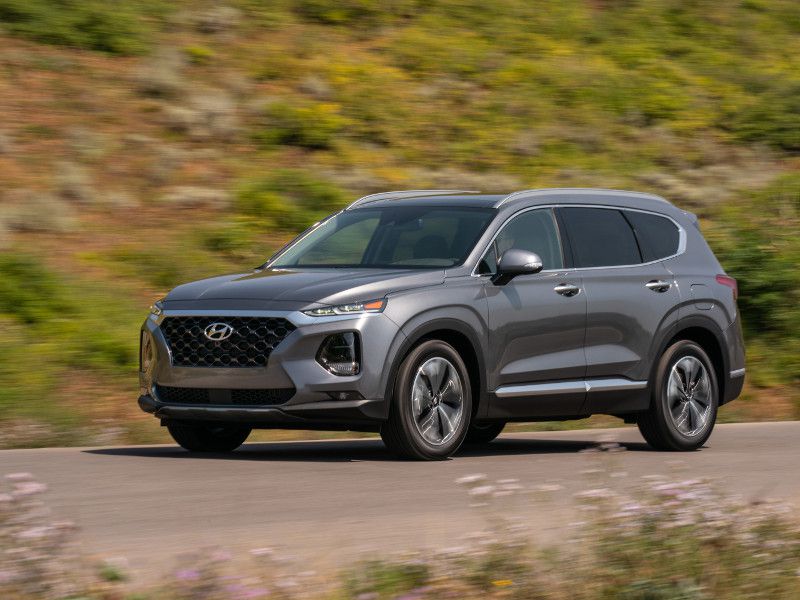
Photo by Hyundai
Battles a Growing List of Competitors
Perhaps realizing that the third row of a three-row SUV remains folded down more often than it's used, Americans are giving five-passenger mid-size crossovers a closer look.
New entrants in the segment include the Chevrolet Blazer and Honda Passport, Volkswagen is about to put the Atlas Cross Sport on sale, while stalwarts like the Ford Edge, Nissan Murano, and Subaru Outback remain popular. Some similarly-sized three-row models include the GMC Acadia, Kia Sorento, and Mitsubishi Outlander. Among them, the Hyundai Santa Fe carves out a niche as an excellent all-arounder, providing a good blend of utility, technology, performance, and capability at an impressively low price.
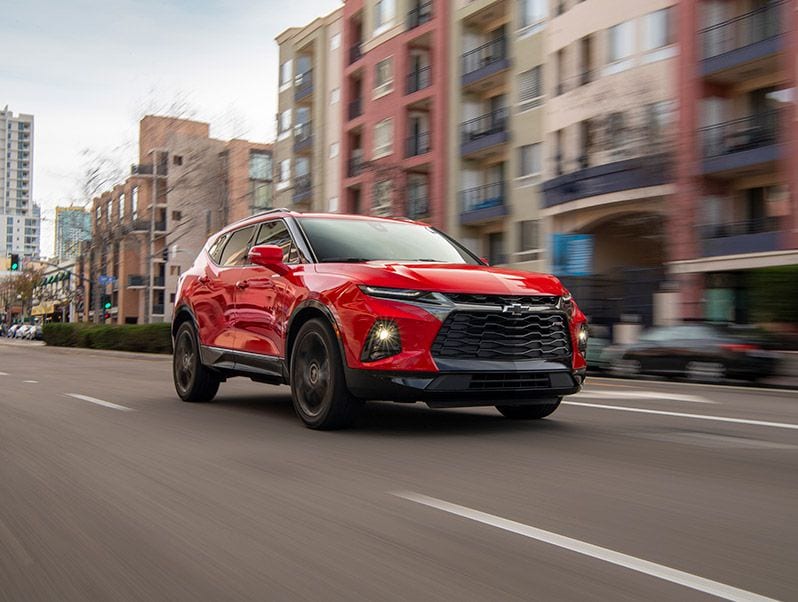
Photo by General Motors
Few Downsides to Santa Fe Ownership
After a week and more than 800 miles of driving under a variety of circumstances, I found the 2020 Hyundai Santa Fe exceptionally easy to live with. As an owner, I no doubt would have also come to appreciate its lengthy free trial to Blue Link services, its five-year and 60,000-mile roadside assistance and comprehensive warranty program, and perhaps even its 10-year/100,000-mile powertrain warranty.
While those perks can help to cement a decision to get the Santa Fe, it is this SUV’s stylish design, quality construction, advanced technology, plentiful practicality, impressive safety ratings, and thoughtful detailing that makes you happy with the choice. In fact, the only potential downsides to the Santa Fe are the somewhat small cargo capacity and the unimpressive fuel economy. Given the upside here, that’s worth the trade-off.
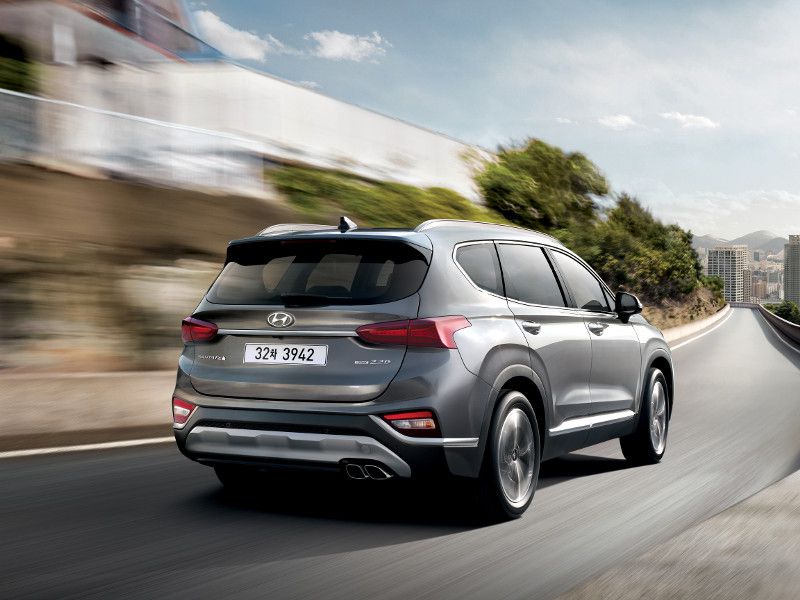
Photo by Hyundai